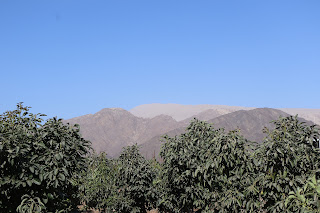The Cantalloc Aqueducts are a series of aqueducts located 4 kilometres (2.5 mi) west of the city of Nazca, Peru, built by the Nazca culture.
More than 40 aqueducts were built, which were used all year round. There are other aqueducts in different parts of the city.
They are part of a system of aqueducts of the same type called puquios that were built by the pre-Inca civilization of Nazca about 1,500 years ago.
The holes in the ground are designed to allow wind to blow into a series of underground canals, in which water from underground aquifers flows.
The aqueducts ensured the supply of water to the city of Nazca and the surrounding fields, allowing the cultivation of cotton, beans, potatoes, and other crops in an arid region.
|
Entrance to the Cantalloc Aqueducts |
|
Cerro Blanco
|
|
Section of the aqueduct in the open air |
|
Ventilation shaft |
|
Maintenance well and access to water |
See also
Source
Location












